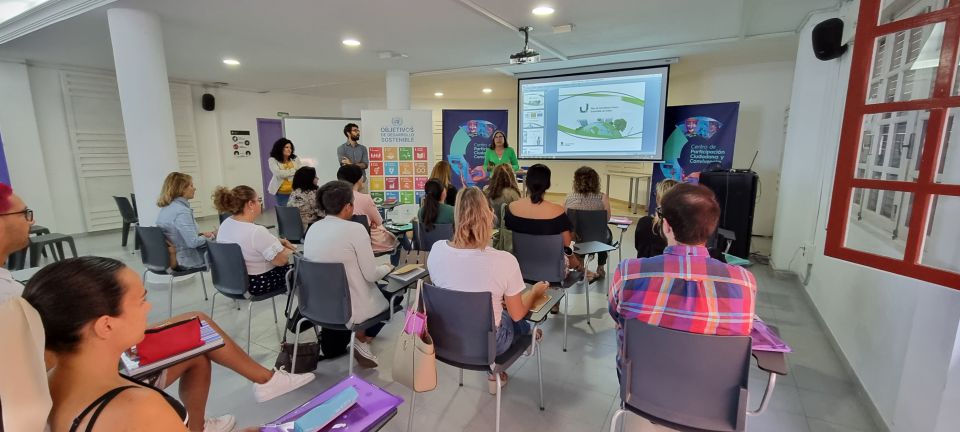PMUS stands for ‘Plan de Movilidad Urbana Sostenible’ (plan for sustainable urban mobility) and is a planning tool for analysing and creating a diagnostic regarding movement in a city, proposing infrastructure actions and the evolution of an urban mobility plan that is more efficient, safer, and above all sustainable. Within this the planners are also incorporating ideas that will improve spaces for non-motorised mobility needs and improve public transport options. This plan is currently being examined by the Adeje council and the TEMA engineering body.
Citizen participation has a role to play in the evolution of this plan, identifying the principal demands of different groups that make up Adeje society. By knowing what the needs are the planners are best able to target improvements adapted to the specific needs of Adeje’s residents, institutions and bodies in the borough. This is why the departments of mobility, works and services and of education, under councillors Esther Rivero Vargas and María Clavjio Maza respectively, are working to see the Adeje PMUS reflects Adeje’s needs in terms of mobility planning.
The PMUS document is made up of different sectors; mobility and pedestrian accessibility, cyclist mobility, schools, public transport, parking, improvement in the road infrastructure, loading zones, and increasing use of electric vehicles and charging points, etc.
The planners have been sitting with different sector representatives in recent weeks and months, including the taxi cooperative, schools and college boards looking at improving traffic access and safe student mobility to and from school, and that also included reps from the parents associations as well, to ensure the relevant issues were being examined from all relevant points of view.
The issue of cyclists is an important one for the PMUS planners and they have met with members of El Fortín cycling club to talk about various aspects of bike use, sporting, tourist, and simply as a daily mode of transport for many residents.
There have been meetings with the local police body to determine any changes needed at a technical level to traffic operations and control, including the issue of electric scooter use in the borough, the issue of urban transport and the question of low emission zones in the town.
There was also a resident meeting held in the Las Nieves centre for citizen participation at which people were able to voice their concerns regarding mobility and examine proposals within the plan.
The plan should be complete within a matter of months and is working example of citizen integration into the future for mobility within the town.
